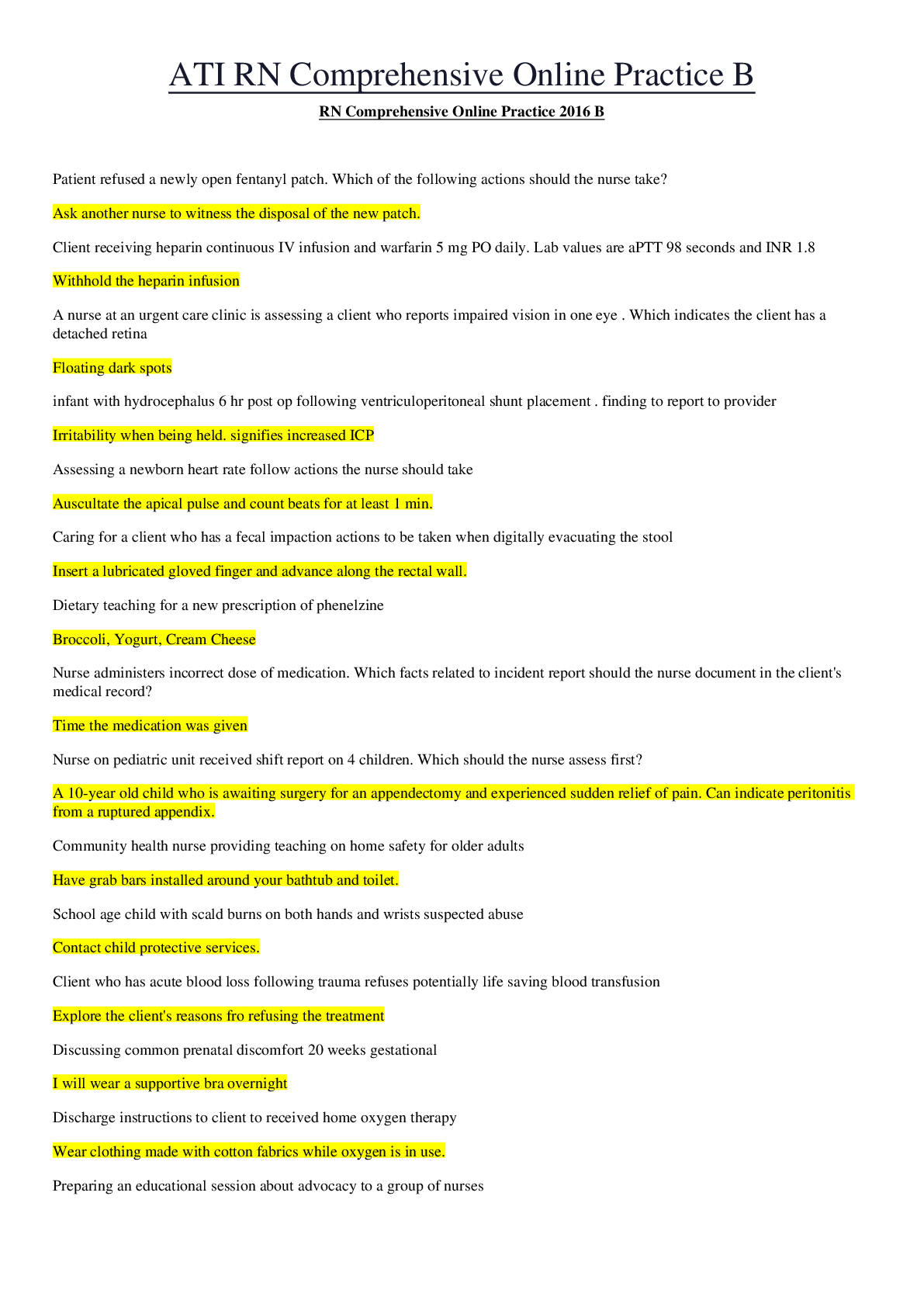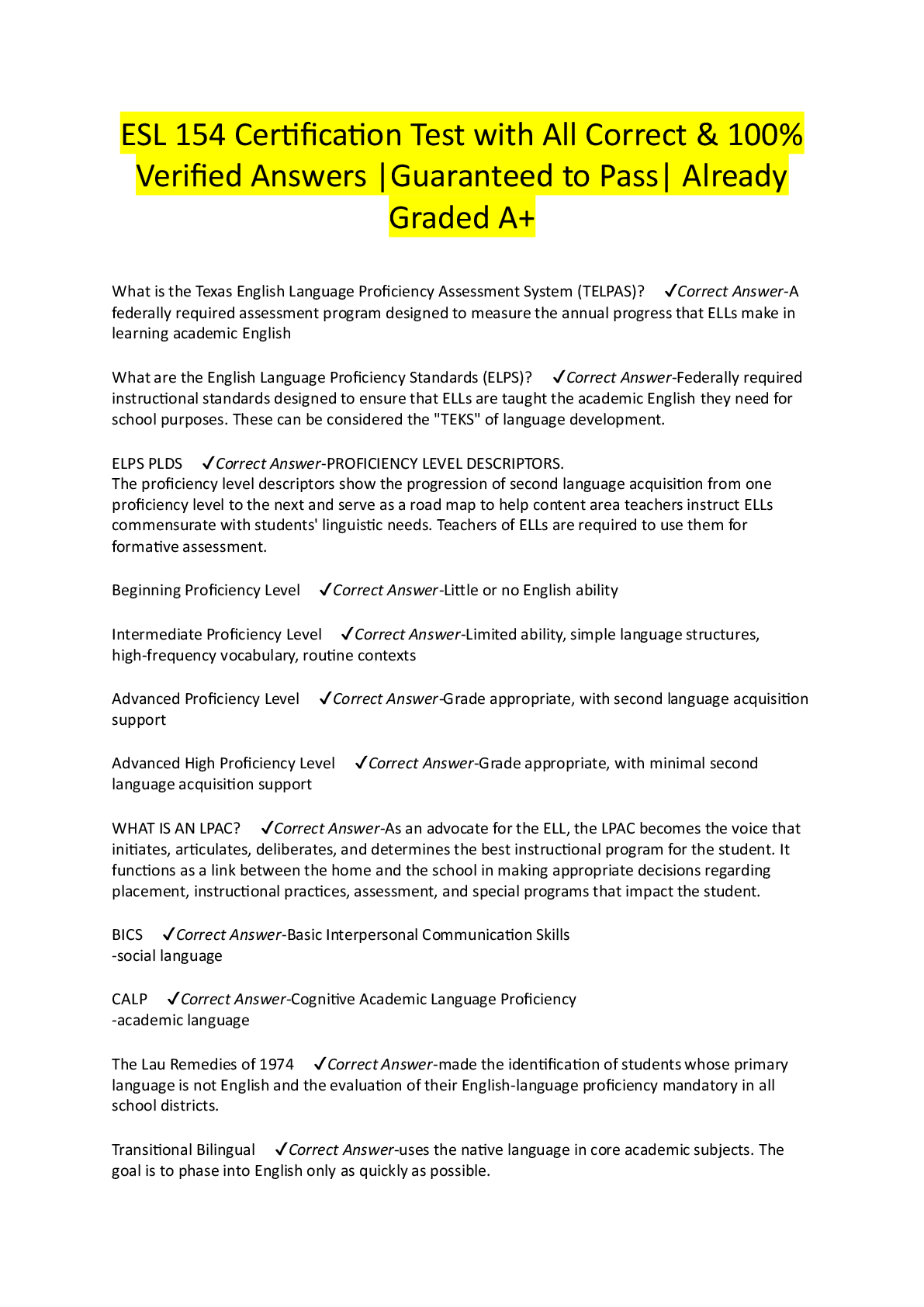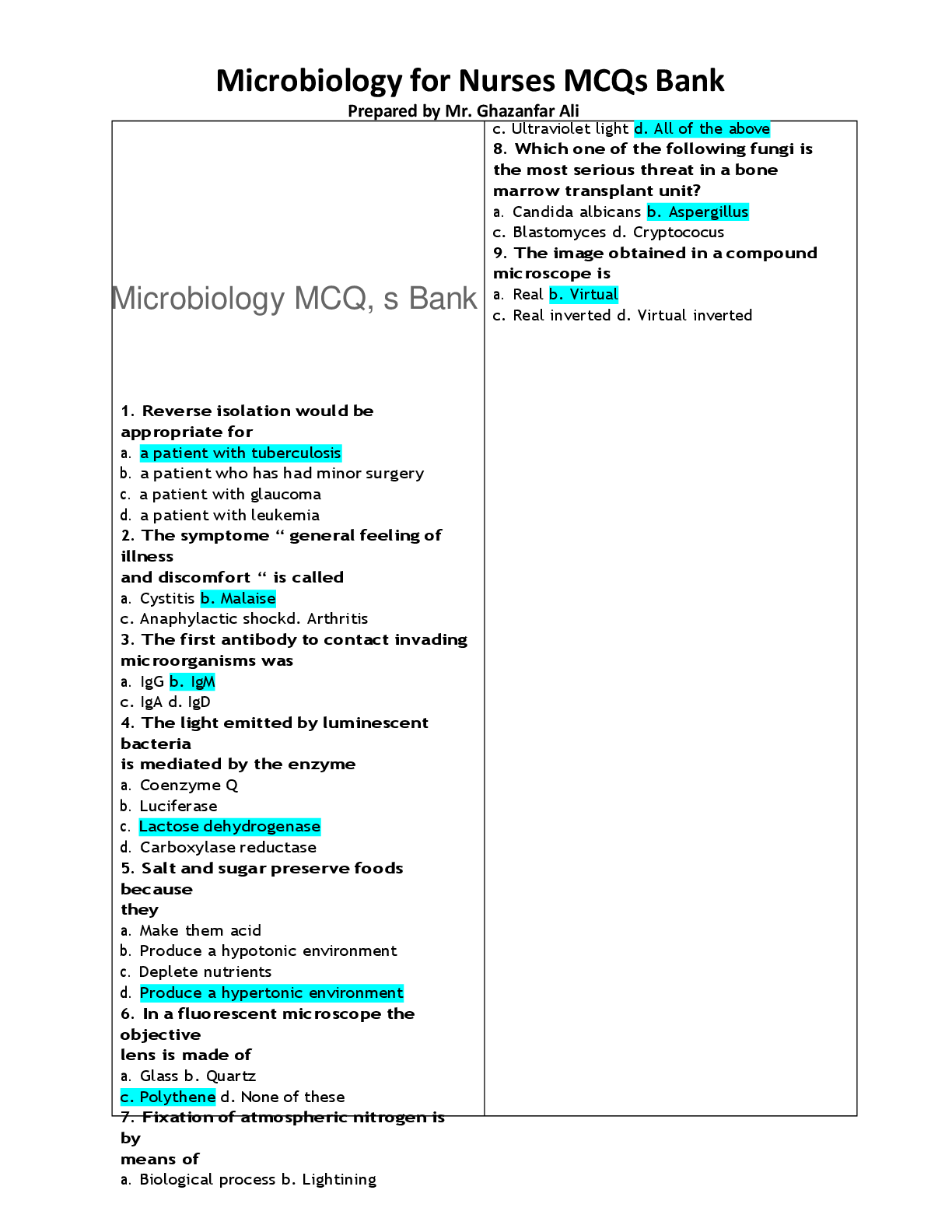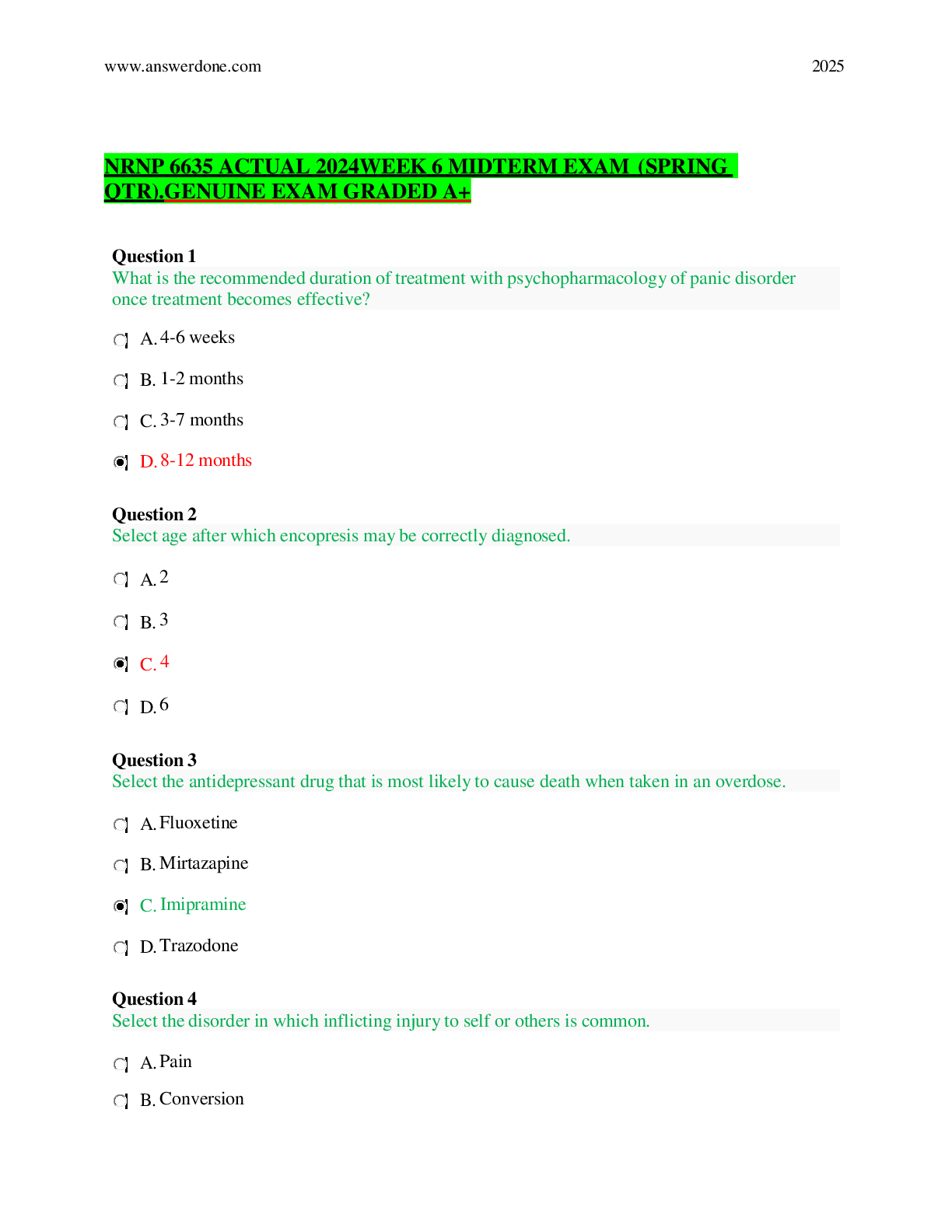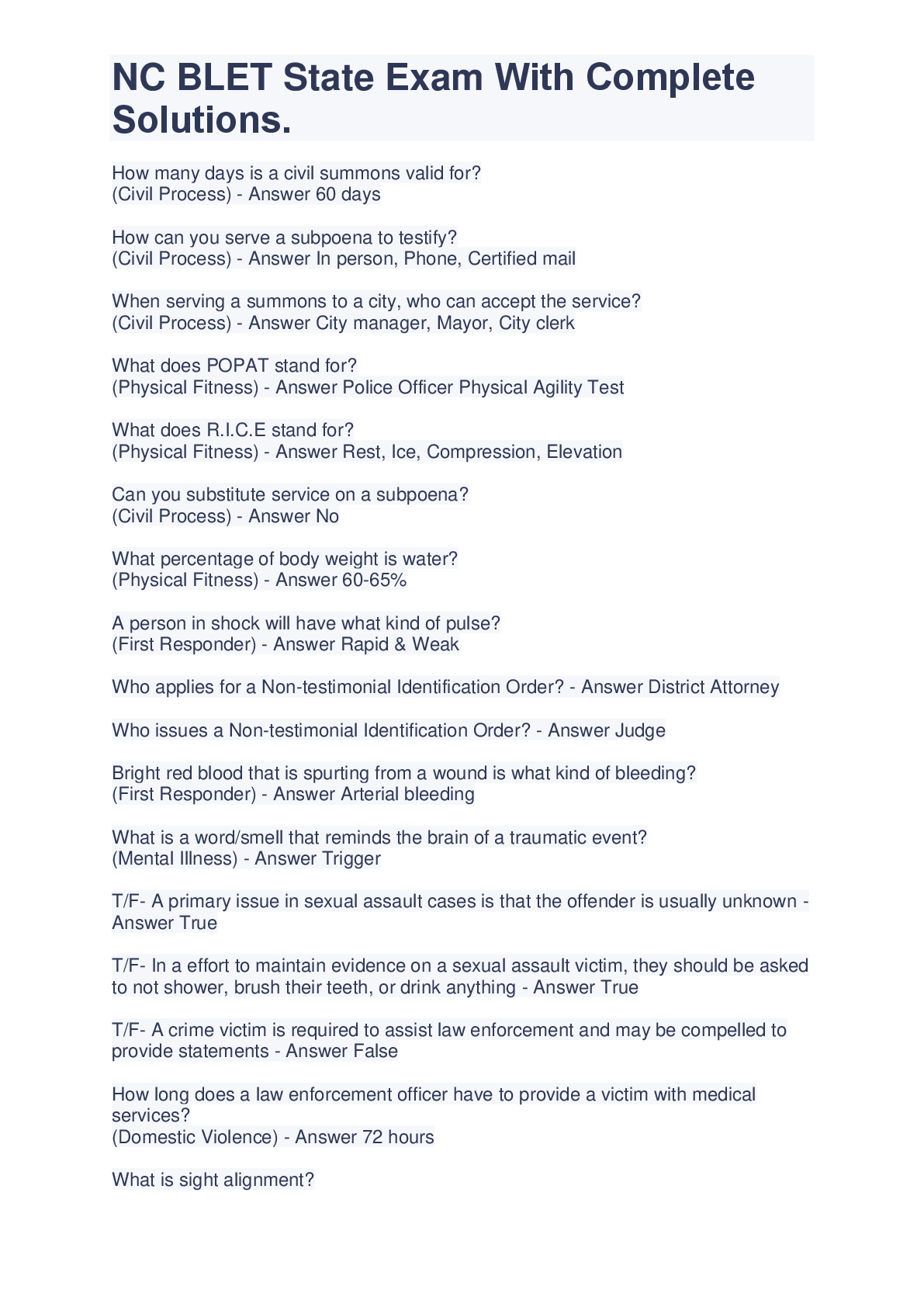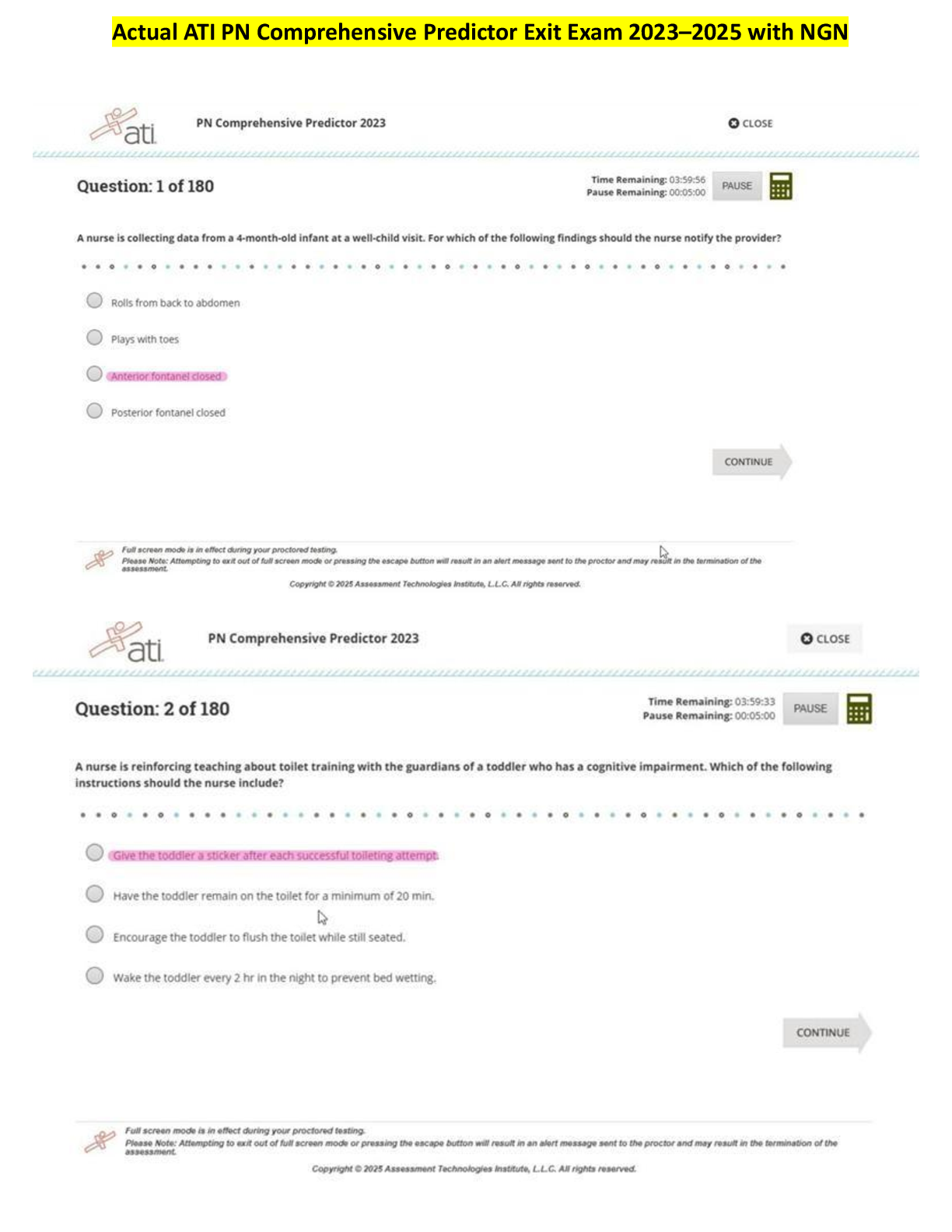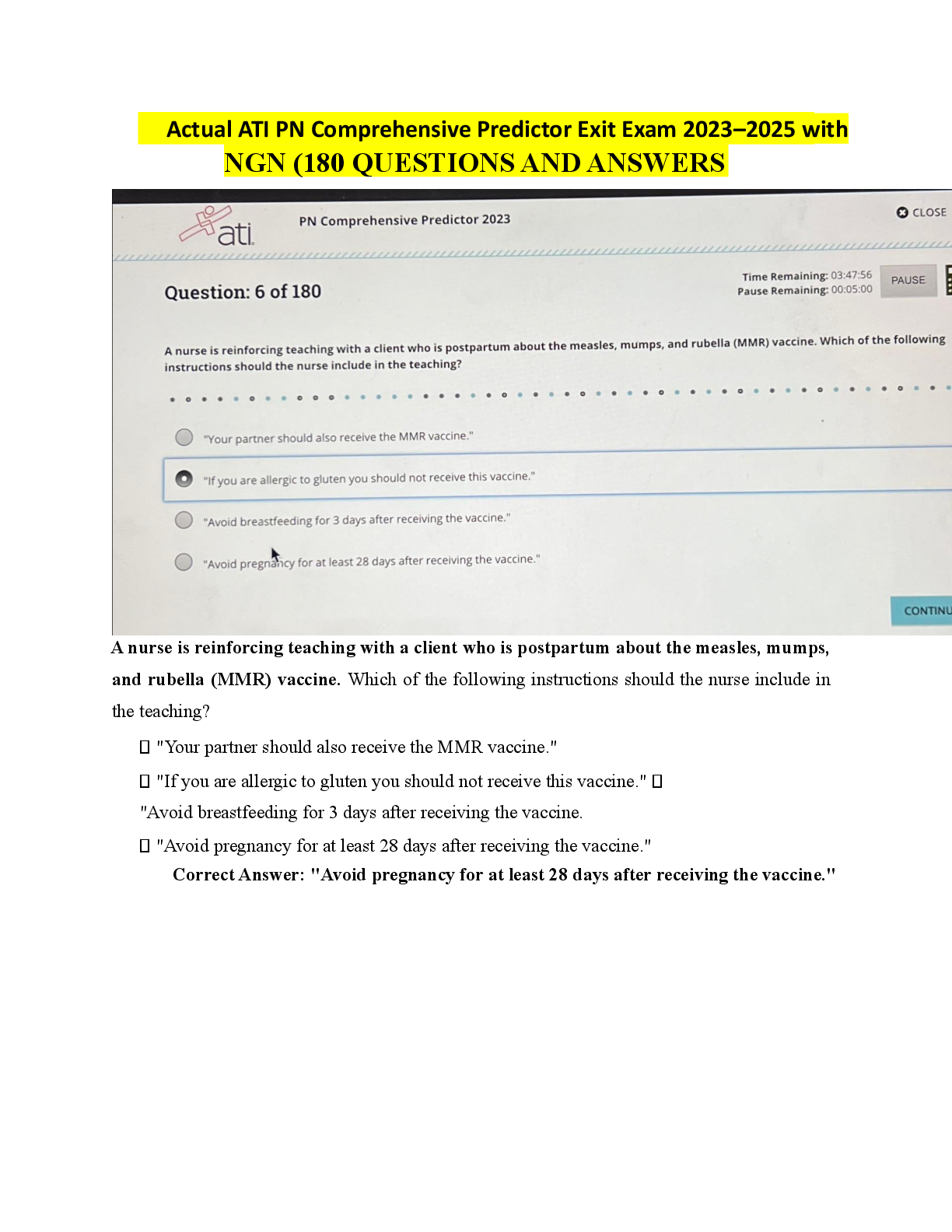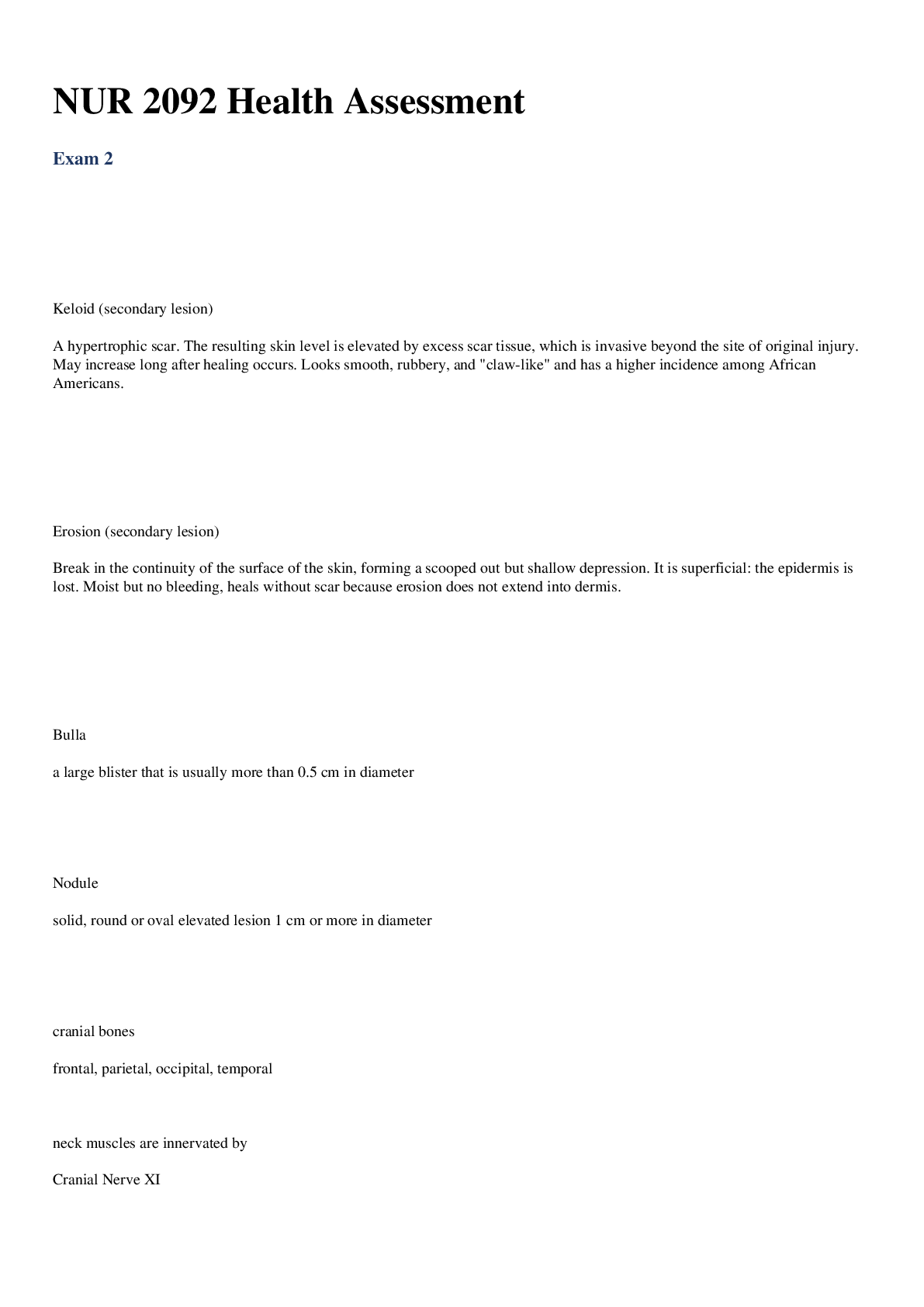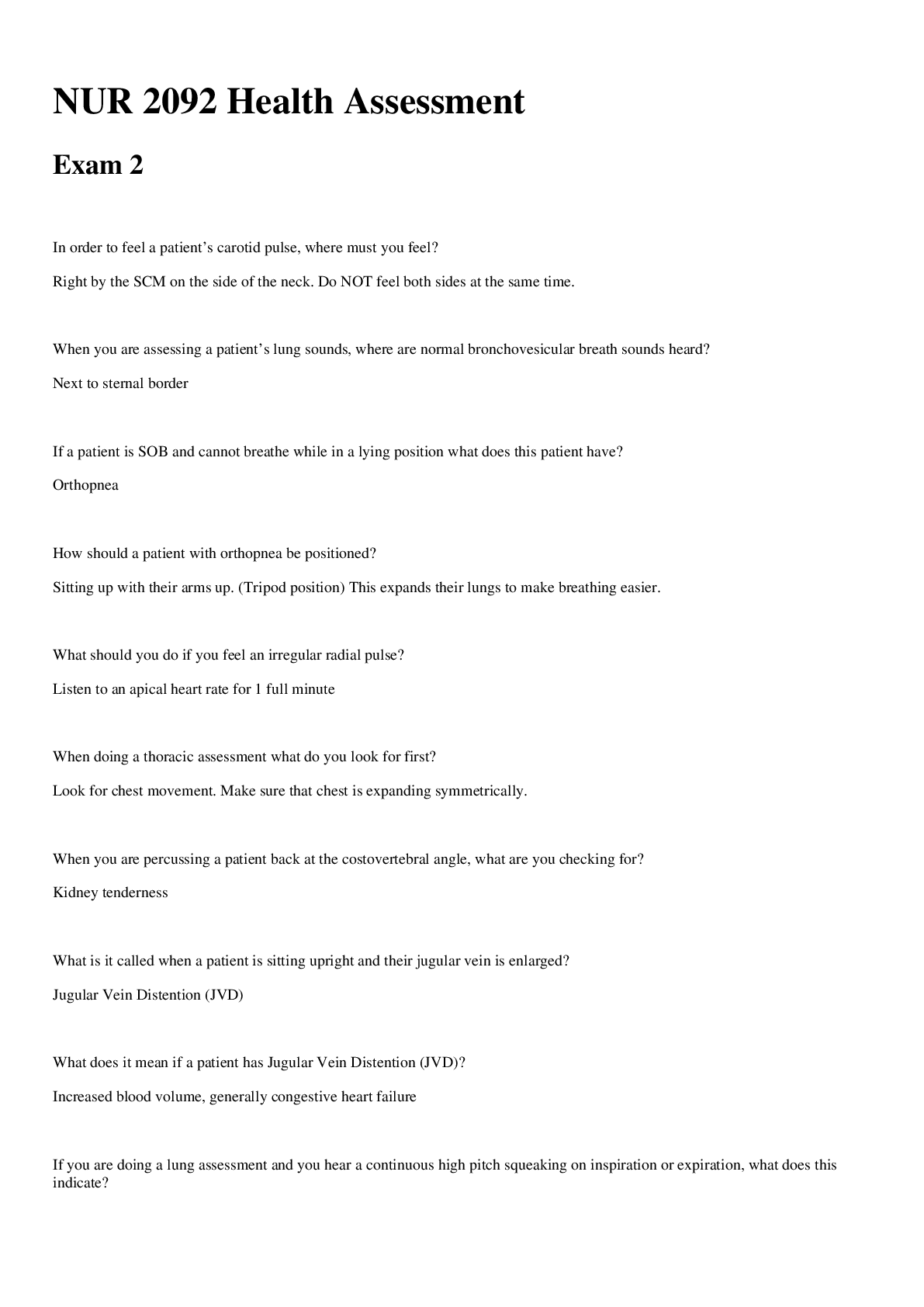ART 1401 Milestone#2 Art History {2020} | ART1401 Milestone#2 Art History {2020}
Document Content and Description Below
ART 1401 Milestone#2 Art History {2020} – University of the People 1 What is the purpose of the oculus in the Pantheon? • To provide support to the dome • To let light in the interio ... r of the structure • To provide support to the massive columns • It is strictly a decorative feature CONCEPT The Pantheon 2 Which of the following correctly describes this image? • Kore • Calf Bearer • Peplos • Contrapposto CONCEPT The Human Figure in Greek Sculpture 3 Which of the following sculptures is from the Hellenistic period? CONCEPT Late Classical and Hellenistic Periods 4 Select the statement that is TRUE about Chaitya Hall. • It is a container for a Buddhist relic. • It incorporates stylistic elements from the Gandhara period. • It was constructed to replaced a stupa at the same location. • It is constructed from thousands of massive stones. CONCEPT Ancient Indian Art until 300 AD 5 Which of the following correctly identify a Greek deity and his or her primary association? • Poseidon - god of the sea • Aphrodite - goddess of war • Hephaestus - god of peace • Nike - goddess of love CONCEPT Ancient Greece 6 The development of stone tools, cave paintings, and sculpted figures characterize the __________ era of prehistory. • Paleolithic • Egyptian • Neolithic • Archeaological CONCEPT Prehistory 7 Which of the following qualities are present in this painting from Lascaux? • Hieratic scale, memory image • Twisted perspective, stele • Stele, hieratic scale • Memory image, optical perspective CONCEPT Cave Painting 8 Think about the early forms of religion in India and how they differ. Select the option that describes Yakshi, a feature of one of these religions. • Founder of the central tenets of Jainism, including the immortality and transmigration of the soul. • Benevolent nature spirit, usually depicted as a voluptuous female. • Symbol of a moral order that keeps the universe from falling into chaos. • Mauryan emperor who erected great pillars inscribed with his moral edicts. CONCEPT Differentiating Early Forms of Religion in India 9 Select the statement that is FALSE about Yakshi figures. • The Yakshi figures date from the same period as the city of Teotihuacan. • Yakshi are female earth spirits that have ties to Buddhism, Hinduism, and Jainism. • They are often depicted as voluptuous female figures with wide hips. • These figures are spirits associated with fertility and protection. CONCEPT Yakshi Figures 10 Select the option that describes the style of this vase. • Geometric • Red figure • Black figure • Orientalizing CONCEPT Vase Painting 11 Which of these constructions was made possible through the Roman use of concrete as a building material? CONCEPT Elements of Roman Architecture 12 Like the mortuary temple of Hatshepsut, the temple of Amun-Mut-Khonsu had a(n) __________. This particular arrangement made it easy for rulers to make additions to their temples. • axial plan • hypostyle hall • serdab • clerestory CONCEPT New Kingdom Architecture 13 Which of the answer choices lists a characteristic that is NOT present in the Arch of Constantine? • Basilica • Relief sculpture • Triumphal arch • Spolia CONCEPT Monuments, the Later Empire, Constantine 14 Select the trait of Mycenaean architecture that is represented in this image. • Repoussé. • Votive figures • Cyclopean construction • Beehive tombs CONCEPT Mycenaean Art 15 Which of the following describes the function of the Dying Lioness relief sculpture from the North Palace of Ashurbanipal? • To demonstrate the king's power over nature • To depict a story from mythology • To commemorate the king's victories in battle • To protect and intimidate through size CONCEPT Art as Expression of Authority: Akkad and Assyria 16 Which of the following does NOT correctly describe a Roman atrium? • Place for rituals associated with familial cults • Often planted with fruit trees • Center of domestic life • Serious and formal space CONCEPT The Roman House 17 Which of the following works of art is from the Amarna Period? CONCEPT Amarna Period and Afterward 18 Which of the following is NOT an architectural feature of the Great Stupa at Sanchi? • Circumambulation • Toranas • Harmika • Yasti CONCEPT The Great Stupa at Sanchi 19 Compare and contrast the Parthenon to the Colosseum. Select the statement that is reflective of the Colosseum. • Built with concrete • Doric order • Dedicated to the goddess Athena • Made of cut marble stone CONCEPT Recognizing Elements of Roman Architecture in Greek Temples 20 Select the work of art representative of the Aegean period. CONCEPT Aegean Art 21 Which of the following is a third-century Buddhist king known for posting his edicts at the top of monumental pillars? • Sarnath • Ashoka • Buddha • Yakshi CONCEPT Ancient India 22 Which of the following is NOT the name of an Egyptian god or goddess? • Seth • Ra • Isis • Ka CONCEPT Ancient Egypt 23 Which of the following themes is NOT a predominant theme of Minoan art? • Energy • Liveliness • Religion • Nature CONCEPT Minoan Art 24 Which of the following is NOT a characteristic of Etruscan architecture? • Oculus • Ridgepole • Stucco • Podium CONCEPT The Etruscans 25 Which architectural element is common amongst both Greek and Etruscan architecture? • Labyrinths • Use of concrete • Rounded arches • Atriums CONCEPT The Romans and the Etruscans 26 Which of the following is the correct definition of "controlled space?" • A type of civic design that is intended to impress or intimidate viewers • A Sumerian temple in the form of a pyramid tower with round, winding stories • An agricultural region in the Middle and Near East • A Sumerian deity with a bull or lion's body, an eagle's wings, and a human head CONCEPT Ancient Near East 27 Which sculptor carved the distinctive wet drapery on the human figures in the Parthenon? • Lyssipus • Polykleitos • Phidias • Athena CONCEPT The Parthenon 28 Which of the following terms describes the Neolithic civilization which built Stonehenge? • Agrarian • Hunter-gatherer • Mesopotamian • Paleolithic CONCEPT Early Architecture 29 Which of the following is a type of tomb that includes a room to house the ka statue? • Mastaba • Pylon Temple • Serdab • Colonnade CONCEPT Old Kingdom Architecture 30 Which of the following characteristics can be used to identify Sumerian votive figures? • Wide-eyed, clasped hands • Clasped hands, heroic warriors • Solar disks, wide-eyed • Heroic warriors, solar disks CONCEPT Sumer 31 A Greek courtyard that is surrounded by columns is known as a(n) __________. • colonnade • hypostyle hall • peristyle • basilica CONCEPT Greek Temples 32 Which of the following is the name for the important pilgrimage site where the Buddhist Sangha came into existence? • Ashoka • Sarnath • Mauryan • Stupa CONCEPT Influence of Buddhism on Ancient Indian Art 33 Which of the following best describes this sculpture? • Subject portrays age and wisdom • Subject's physical imperfections are emphasized • Subject is depicted in the Flavian style • Subject is portrayed as a god CONCEPT Portraiture, Republic to Flavians [Show More]
Last updated: 3 years ago
Preview 1 out of 18 pages

Buy this document to get the full access instantly
Instant Download Access after purchase
Buy NowInstant download
We Accept:

Reviews( 0 )
$11.50
Can't find what you want? Try our AI powered Search
Document information
Connected school, study & course
About the document
Uploaded On
Feb 28, 2021
Number of pages
18
Written in
All
Additional information
This document has been written for:
Uploaded
Feb 28, 2021
Downloads
0
Views
100








 – University of the People.png)
